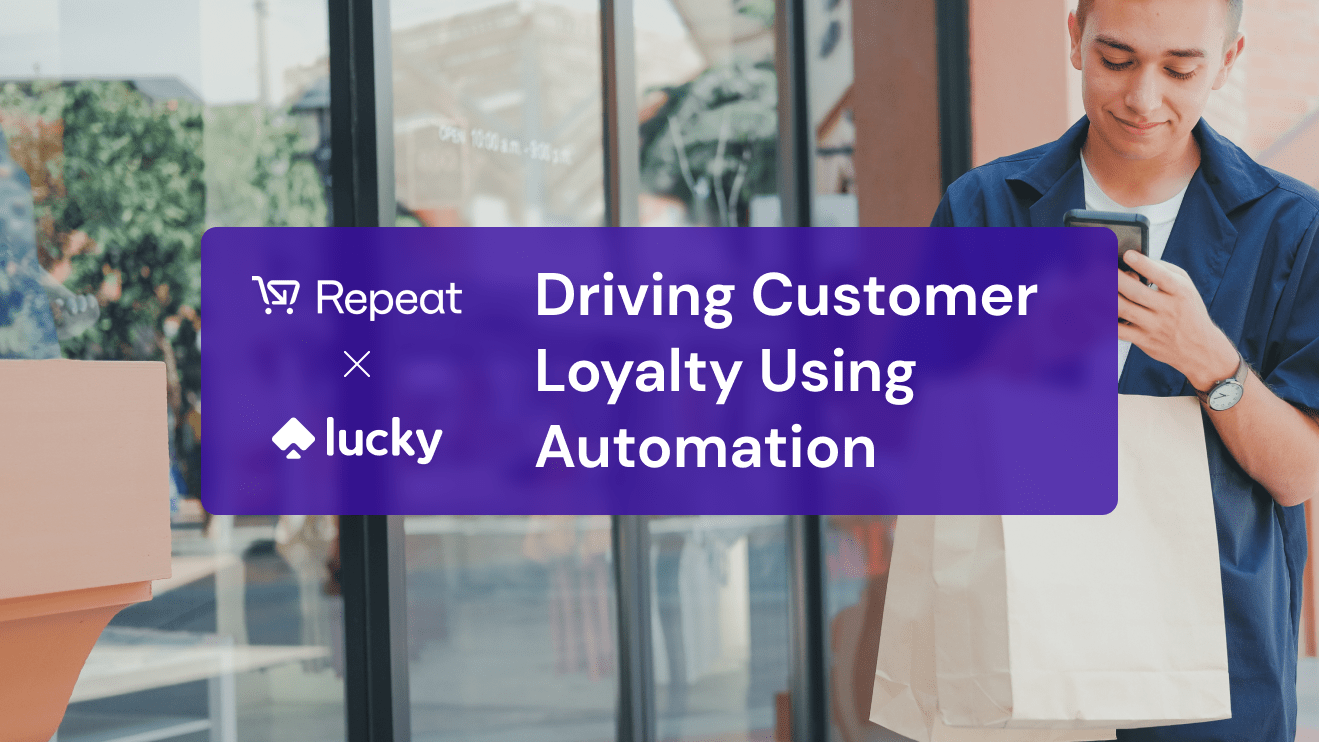Back
Customer Loyalty
Driving Customer Loyalty Using Automation with Repeat and Lucky
November 16, 2022

In today's increasingly digital world, brands can reach millions of consumers in an instant. However, for online brands to truly stand out, they need to cultivate customer loyalty and foster closer relationships with their customers. This means providing a consistent, high-quality experience across all customer touchpoints, from the website or app to social media interactions and even offline events. Our own Sneh Parmar sat down with Kaesaan Mimms, Partnerships Manager at Repeat, to discuss how digitally native brands can use automation to drive customer loyalty.
Getting customers from one-time purchasers to subscribers
- Recurring revenue from loyal customers is the holy grail for digitally native direct-to-consumer (DTC) companies.
- There is a growing opportunity for digitally native brands to push consumers to subscriptions.
- In 2018, McKinsey found that 15% of online shoppers subscribed to an eCommerce service in the past year.
- However, getting customers from first-time purchasers to subscribers takes work.
- After a few repeat purchases, customers may stop purchasing.
"Across all our brands, we typically see the median replenishment window start to decrease around the third or fourth order, and that's when we're helping advise our brands and when they should start to push a bit more subscription kind of content." -Mimms
DTC and Omnichannel Brands are facing challenging times
- DTC brands focused on CPG are dealing with some headwinds.
- These challenges have pushed brands to better understand their best customers.
"What we've seen is that DTC is more of a loyalty play to understand your most frequent customers." - Mimms
- Making customer loyalty easier for brands is key to long-term success.
- Omnichannel brands are seeing their DTC margins reduce in the current climate.
"They don't want to put as much resources there if it's not going to generate as much revenue as before." - Mimms
- In order to navigate these challenges, omnichannel brands are looking to automate and optimize their DTC channel to focus more on retail and wholesale.
Using Automation to Drive Customer Loyalty
- DTC and omnichannel brands can utilize automation to improve customer loyalty and turn a one-time customer into a subscriber.
- Creating personalized carts when customers reorder products can help lead to more sales.
- "And so, by making that loyalty play a bit easier, we can actually just make it as easy as walking to the store by providing a personalized cart to customers." - Mimms
- Marketers can also utilize automation through SMS and email, so they can focus less on getting customers to reorder and more on other strategic initiatives.
"You don't have to be a $500 Million brand to have that level of retention or have that level of customization." -Parmar
Repeat and Lucky Helps Brands Improve Customer Loyalty
- Repeat creates automation through email and SMS channels to automate and optimize the work it takes to get customers to reorder.
"And so a customer can not only see what's due to reorder but their entire purchase history as well as recommended products." - Mimms
- This process creates a more personalized experience for the customer, which drives loyalty.
"The fact that you guys would take customers from a single purchase to a subscription that's huge for brands, that's extremely valuable for them." - Parmar
- Lucky can further increase customer loyalty by increasing conversion opportunities through showing customers both online and nearby retail options to receive their product.
Lucky and Repeat can help digitally native brands better understand and serve their customers. If you are a brand and interested in learning more about Lucky or Repeat, reach out today
Scale your brand in retail with real-time data


